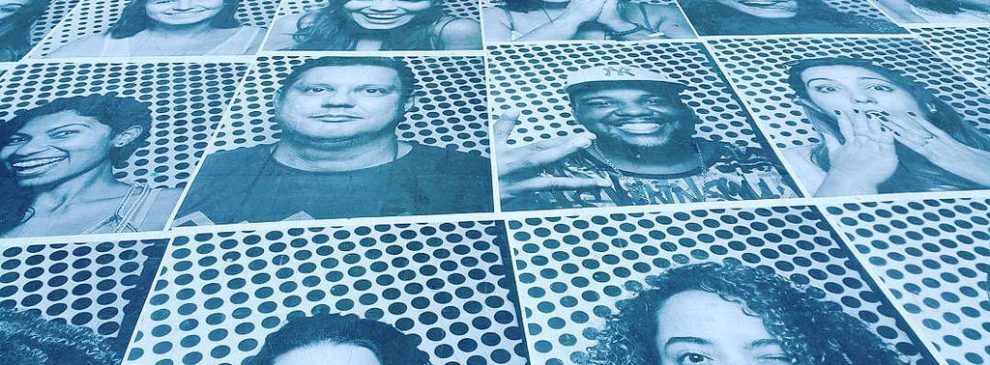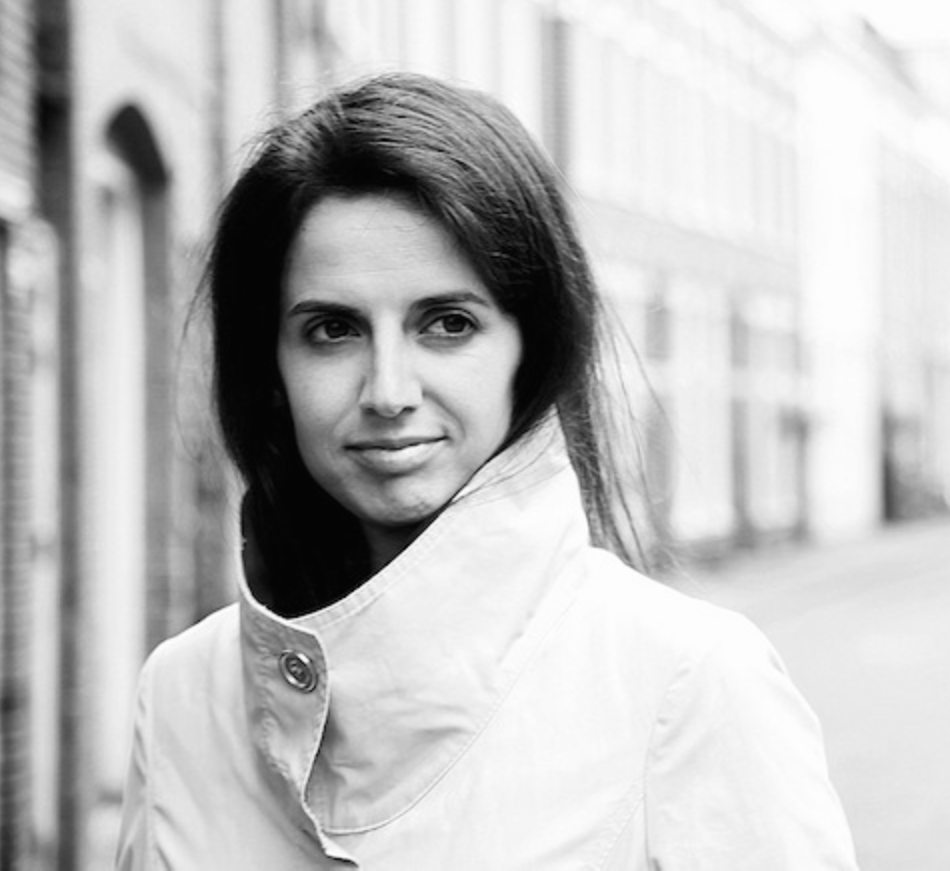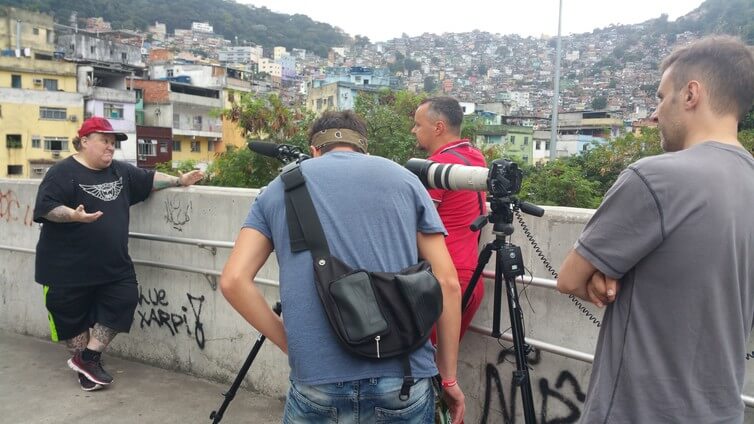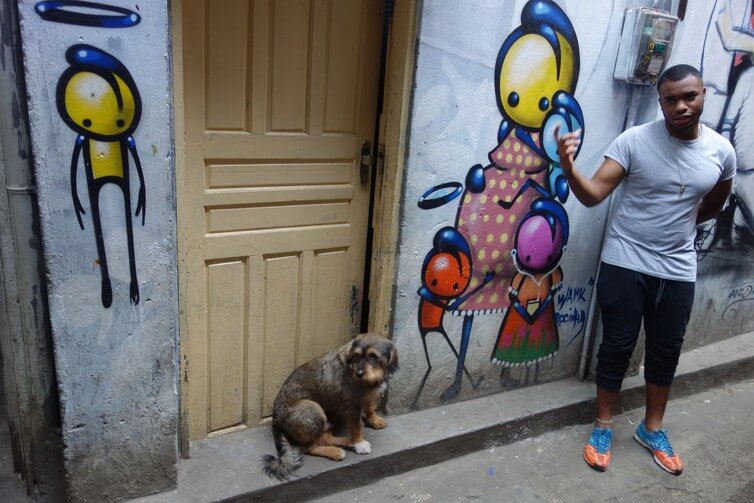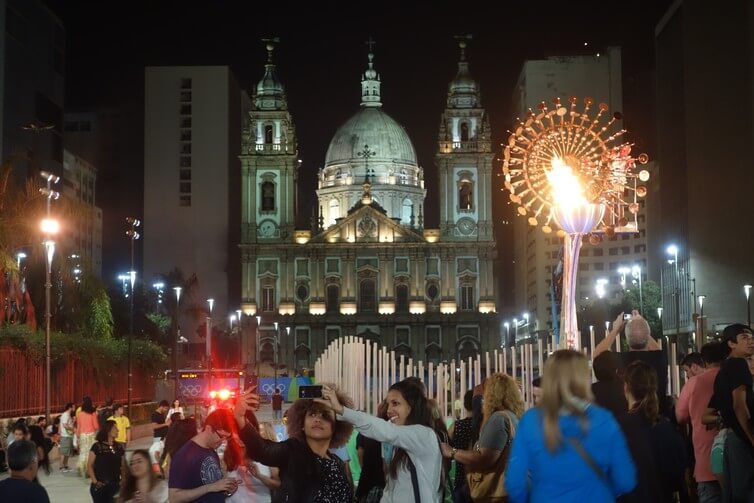Reflections on Rio 2016: Bad stories are not always the truest
Added on Sunday, August 21st, 2016
…
We wake up to the last day of the Olympic Games in Rio, a few hours after Brazil’s gold medal win at football, and the first international media roundups are starting to come in. Some, such as this piece by Luiz Eduardo Soares, are quite damming and conclude that a sustainable legacy for the city is uncertain (or impossible). Overall, these Games have been characterised by two practically opposed narratives: on the one side, the thrill of sporting prowess – quite notably in the UK, with British athletes beating the London 2012 medal count; on the other, the ongoing pessimism towards the city’s chances for positive transformation and a penchant towards sensationalistic stories around long-ingrained negative stereotypes.
Favela life beyond the pre-scripted narratives
Local residents are frustrated that stories about the kinds of urban, social and cultural change also taking place are not being picked up by journalists. This is obvious in the case of favela life, with places like Rocinha, one of the largest and best positioned favelas in the city, being regularly used by international reporters as a backdrop to stories that often look like they had been pre-scripted before media crews left home.
| DJ Zezinho speaks to a Russian TV crew about his work as community DJ in Rocinha. |
…
Local cultural activists such as DJ Zezinho and Obi Wan tell us they are disappointed and fed up at being used only as an excuse to talk about everything that is wrong in Rio. They insist that their community life is thriving: artists (both home-bred and adopted) are acting as catalysts for change and are fully embedded in their local environment; the first libraries are opening up; and a first metro stop will transform accessibility and finally make it plain to everyone else in the city that they are part of Rio (“the transport authorities wanted to call this stop São Conrado exclusively. We are lobbying to include the name Rocinha and make it official: We are Rio!”).
Their reactions to the Olympics are mixed (“we are not allowed to use the metro until after the Games – at the moment, only Olympic competition ticket holders can”) but most accept that the big event has helped advance some change in positive ways and, most notably, that it has provoked local (as well as new-coming) community-based entrepreneurs into positive action.
“You only hear about the problems. The displacements. But for many of us there is also a brighter future in the wake of pacification, which was pushed forward by the Olympics. We are all having to learn to live in different ways. It is not straight forward. We do not like the police. But we deserve attention and schools and hospitals and public facilities and this is all progressively unfolding now.”
The experience of Casa Amarela, a cultural centre led by the first IOC appointed Olympic artist-in residence, JR, in Providence – one of the oldest favelas – is another positive example of change partly accelerated by the environment generated around the Games.
| Local entrepreneur Obi Wan talks in front of Rocinha graffiti sensation Wark, whose work is spread throughout Rio and internationally. |
…
The Games and the reimagination of urban space
Looking at the international portrayal of Rio, one might think that the city is just a bunch of favelas for the poor alongside fabulous touristy beaches for visitors and the rich. But the city does also have a middle class and 60 per cent to 75 per cent of its population (depending on which figures you choose to believe) lives in neighbourhoods across four large districts: the historic downtown, Centro; the touristy and mid-to-upper class Zona Sul; the mainly residential and less wealthy Zona Norte; and the peripheries in the West side, including the rapidly developing Barra da Tijuca, site of the main Olympic Park, around which the newer communities of wealth are concentrating. For these residents, in particular those in Centro and Zona Norte, the Olympic Games have also opened up an enormous space of debate around the kind of city Rio is and can be. The most commonly repeated official statistic is the reference to public transport expansion, the key legacy commitment from Mayor Paes, who claims that, in seven years, the percentage of Rio’s population having access to public transport has risen “from 18 per cent to over 63 per cent”. This is being repeated like a mantra by both City and Olympic officials. But an equally important (and, culturally, more significant) urban legacy for Rio is the rediscovery of its public realm (beyond the beach) and of traditionally class-divided urban public spaces as agoras for collective gathering. Much in the way that Barcelona rediscovered its port through the 1992 Olympics, Rio has reconnected with its long-derelict, feared and abandoned Porto Maravilhas. This is a tranche of space bordering the heart of downtown (Centro), an area bustling with office workers from all across the city every weekday but lacking space for encounter and, traditionally, a no-go area in the evenings and weekends.
Porto Maravilhas has been presented back to the city as the Boulevard Olimpico during the Games fortnight and it has become the place to be. Its huge success is not only due to hosting large screens to watch the sport (Live Sites, a tradition started in Atlanta 1996 and presented most successfully in Sydney 2000 and London 2012), but due to the ingenious way it combines a diverse cultural offer (the new Museum of Tomorrow, the revamped Museum of Art in Rio) with business displays and entertainment. Further, it is thanks to the thoughtful way it has recovered and re-appropriated its urban fabric, sparking a flurry of street artists (five so far, and counting) to take over old warehouse walls and produce monumental graffiti artworks.
From a Games-time symbolic point view, bringing to the city centre a second cauldron identical to the one lit at the Maracana stadium during the opening ceremony has contributed to the appeal of the area in important ways: it has offered the many residents that have no Games tickets a chance to experience one the most recognisable Olympic icons first hand.
| It is the second time (after the Vancouver Winter Olympics) that an Olympic Caultron has been placed outside an Olympic sports venue. This is one of Rio’s favourite spots for selfies. |
…
Cariocas have flocked here in their thousands (over 4 million people in two weeks, we are told) and have felt safe in and fully embraced this new part of their city. There will be no white elephants in this area. The port has passed from a no-go to must-go area in a matter of months and, given its privileged position as meeting point for daily work commuters, it is apparent that it is set to become one of the most lively and diverse public ream areas in this traditionally north-south divided city.
| The largest set of Olympic rings are placed at Madureira park, in the low-income Zona Norte. |
…
Parque Madureira in the northern part of the city is acting as a second Boulevard Olimpico and is another example of positive regeneration leaving a hard-to-dispute community legacy. Located amongst a densely populated low-income neighbourhood in an area dominated by factory infrastructure without neighbourhood amenities, this new park has brought greenery, sporting facilities and an extended cultural life to a neighbourhood of over 350,000 people. During Games time, this is the party gathering place in Rio’s Zona Norte.
Image and identity legacies in the Olympic city
These 17 days of Olympic competition have exposed Rio as the large urban geographical mass it is, beyond its iconic beaches. Activities, dotted across its four extreme points, have forced most hardcore Olympic followers to spend a considerable part of their day in transit. They have also forced us all – those of us who are here and not only depend on pre-scripted international topics to form our views on Rio – to recognise its many facets, beyond the coconuts in Copacabana and the dirt in the slums. They have forced us to see the generosity of the Carioca, their thrill at discovering new spaces to gather, exercise and party; their surprise at mixing up with people from other districts – often, for the first time, given the traditional north-south economic divide – and concluding that it is rewarding; and their refusal to accept being stuck in stereotype and condemned to repeat forever the same social and cultural mistakes.
There are hard times ahead, given the country’s ongoing recession and political turmoil. But a city that opens up new ‘agoras’ and has had a chance at generating positive collective memories over a fortnight (and counting, with the Paralympics yet to come), has better chances than most at overcoming past errors. Rather than obsess over a defeatist ‘can’t do’ attitude – the kind most Cariocas felt trapped into just up to the start of the opening ceremony – there is much to be gained by paying attention as well to what has gone right at this Olympics. The opening ceremony stressed the capacity for pop culture to empower the people of Rio, in particular the less favoured. The closing ceremony has celebrated the efforts towards social progress and citizen participation at large, with the IOC president making a point of congratulating, not just the volunteers (as is customary), but also the education programme (Transforma) and Rio’s efforts towards advancing peace. There are many possible narratives around the capacity for (and challenges against) Rio’s urban, social and cultural regeneration. But as we have so pertinently learnt at these Games, the worst stories are not necessarily always the truest.
An abridged version of this article was originally posted on the Conversation and is available here.

